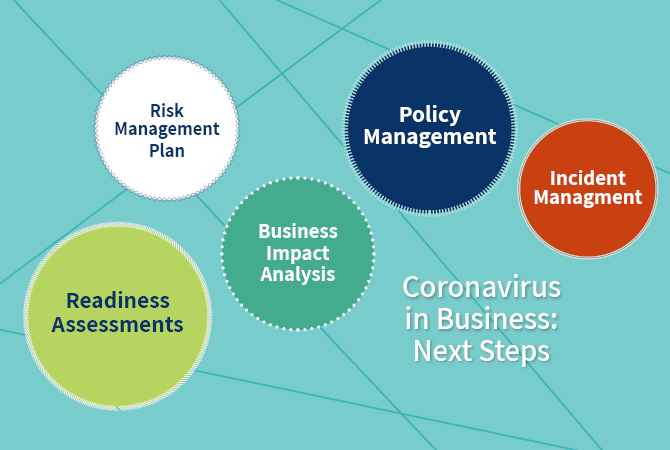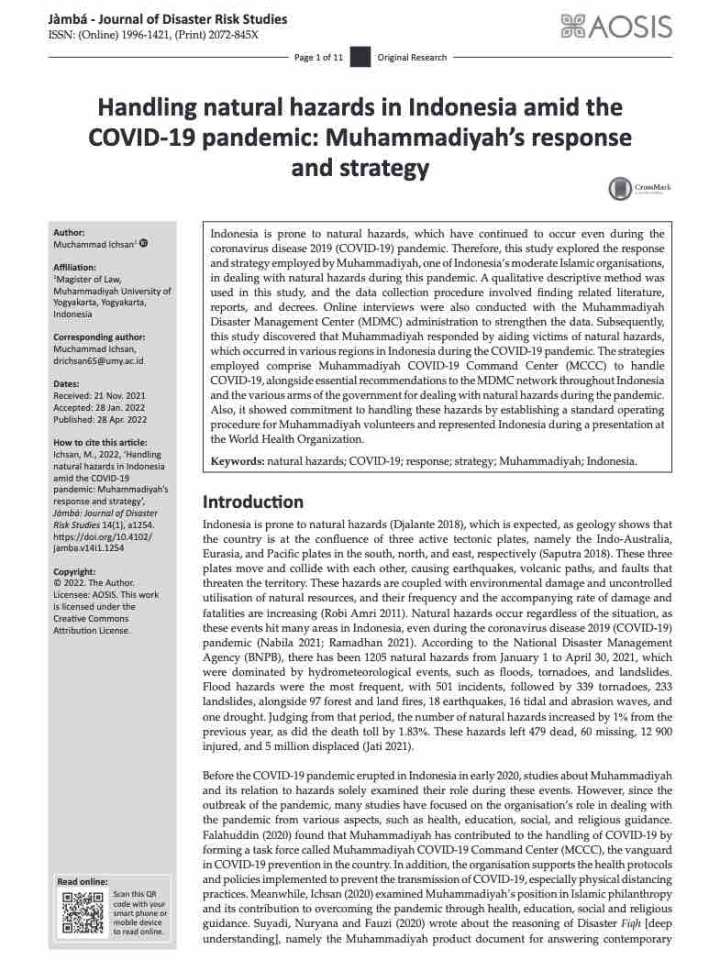Pandemic Risk Management: Strategies for Resilient Business Operations

Pandemic Risk Management: Strategies for Resilient Business Operations
The ongoing global pandemic has underscored the critical importance of effective risk management strategies for businesses. As organizations navigate unprecedented challenges, a robust pandemic risk management plan becomes indispensable.
Understanding the Pandemic Landscape
In crafting an effective pandemic risk management strategy, the first step is gaining a comprehensive understanding of the current landscape. This involves staying informed about the latest developments, monitoring health guidelines, and assessing the specific risks that the organization faces.
Implementing Safety Protocols
One of the primary components of a robust pandemic risk management plan is the implementation of stringent safety protocols. This includes measures such as regular sanitization, social distancing, and providing personal protective equipment (PPE) to employees. These actions not only safeguard the workforce but also contribute to the overall resilience of the business.
Prioritizing Employee Health and Well-being
A key aspect of pandemic risk management is prioritizing the health and well-being of employees. This involves not only physical health but also addressing mental health challenges that may arise during these challenging times. Offering support services and fostering a culture of open communication can significantly contribute to employee well-being.
Developing Emergency Response Plans
To effectively manage pandemic-related risks, organizations must have well-defined emergency response plans in place. These plans should outline specific steps to be taken in the event of an outbreak within the workforce or the community, ensuring a swift and coordinated response.
Implementing Remote Work Solutions
The rise of remote work has become a pivotal element in pandemic risk management. Establishing reliable remote work solutions allows business operations to continue seamlessly while minimizing the risk of virus transmission among employees.
Ensuring Compliance with Health Guidelines
Adherence to health guidelines and regulations is non-negotiable in pandemic risk management. Organizations must stay vigilant and adapt their policies and practices in accordance with evolving guidelines to maintain a safe and compliant work environment.
Collaborating with Health Authorities
Building strong partnerships with health authorities and experts is crucial. Regular consultations with relevant health agencies can provide valuable insights and ensure that the organization’s risk management strategies align with the latest scientific and medical recommendations.
Investing in Training and Awareness Programs
Education is a powerful tool in pandemic risk management. Investing in training programs that educate employees about health protocols, safety measures, and the importance of adherence can significantly enhance the effectiveness of risk management efforts.
Monitoring and Adjusting Strategies
Pandemic risk management is an ongoing process that requires continuous monitoring and adjustment. Regularly assessing the effectiveness of implemented strategies, gathering feedback from employees, and staying abreast of emerging developments are essential for refining and improving the overall approach.
In conclusion, navigating the complexities of a pandemic requires a multifaceted and adaptive approach to risk management. By prioritizing employee well-being, implementing safety measures, and staying informed, organizations can build resilience and ensure the continuity of their operations in the face of unprecedented challenges.
For further insights into effective pandemic risk management, visit The Healthy Consumer website. Stay informed, stay safe.
Strategic Responses: Navigating Pandemic Challenges

Crafting Effective Responses: Navigating Pandemic Challenges
The unprecedented challenges posed by a global pandemic demand strategic and adaptive responses. In navigating these complex scenarios, effective pandemic response strategies emerge as crucial tools for mitigating the impact, safeguarding communities, and fostering resilience.
Understanding the Dynamic Nature of Pandemics
The foundation of effective pandemic response lies in a comprehensive understanding of the dynamic nature of these global health crises. Recognizing that pandemics evolve, presenting different challenges at various stages, allows for the formulation of strategies that are agile, adaptive, and rooted in real-time data and insights.
Collaborative Governance and Interagency Coordination
A successful pandemic response requires collaborative governance and seamless interagency coordination. Governments, healthcare systems, and relevant agencies must work together cohesively. Establishing clear communication channels, sharing resources, and coordinating efforts ensure a unified response that is vital in managing the complexities of a pandemic.
Implementing Early Detection and Surveillance Systems
Early detection is paramount in controlling the spread of a pandemic. Implementing robust surveillance systems, both at local and global levels, facilitates early identification of outbreaks. Monitoring trends, analyzing data, and swiftly responding to emerging threats enable authorities to contain and manage the impact of the pandemic effectively.
Strategic Testing and Contact Tracing Initiatives
Strategic testing and contact tracing initiatives form the bedrock of a targeted response. Widespread and accessible testing, coupled with efficient contact tracing, allows for the identification and isolation of cases promptly. This strategic approach helps break the chains of transmission and prevents the exponential spread of the virus.
Healthcare System Preparedness and Capacity Building
Ensuring the preparedness and capacity of healthcare systems is a critical aspect of pandemic response. This involves strengthening healthcare infrastructure, securing adequate medical supplies, and enhancing the capacity of healthcare professionals. A robust healthcare system is essential for managing the influx of patients and providing quality care.
Communication and Public Awareness Campaigns
Transparent and timely communication is indispensable in a pandemic response. Implementing effective communication strategies and public awareness campaigns disseminate accurate information, dispel myths, and foster a sense of collective responsibility. Informed communities are more likely to adhere to preventive measures, contributing to the overall success of the response.
Balancing Social and Economic Impacts
Pandemic response strategies must strike a delicate balance between addressing the health crisis and mitigating social and economic impacts. Implementing measures to support individuals and businesses affected by the pandemic, such as financial aid packages, unemployment support, and targeted economic stimulus, contributes to a more holistic response.
Prioritizing Vulnerable Populations and Equity
An equitable pandemic response prioritizes the needs of vulnerable populations. This includes the elderly, individuals with underlying health conditions, and marginalized communities. Tailoring strategies to address the specific challenges faced by these groups ensures that the response is inclusive and leaves no one behind.
International Cooperation and Information Sharing
Pandemics transcend borders, underscoring the importance of international cooperation. Sharing information, expertise, and resources on a global scale enhances the collective response. Collaborative efforts among nations foster a sense of solidarity and enable a more effective and coordinated approach to managing and overcoming the pandemic.
To delve deeper into effective pandemic response strategies, visit Pandemic Response Strategies. As the world grapples with the challenges posed by global health crises, implementing thoughtful and strategic responses is imperative. By understanding the evolving nature of pandemics, fostering collaboration, and prioritizing the well-being of communities, nations can navigate these challenges with resilience and effectiveness.
Containment Mastery: Effective Pandemic Measures

Crafting a Shield: Navigating Pandemic Containment Measures
In the face of global health crises, the efficacy of pandemic containment measures becomes paramount. These measures form a strategic shield against the spread of infectious diseases, requiring a comprehensive approach that encompasses early detection, swift response, and collaborative efforts on a global scale.
Early Detection: The First Line of Defense
The foundation of effective pandemic containment lies in early detection. Swift identification of potential outbreaks enables authorities to implement targeted measures to curb the spread. Early detection mechanisms, such as robust surveillance systems and widespread testing initiatives, form the frontline defense against the rapid transmission of infectious diseases.
Strategic Testing Protocols: Identifying and Isolating Cases
Strategic testing protocols play a pivotal role in pandemic containment. Standardized and widespread testing ensures the identification and isolation of cases, preventing further transmission. Implementing evidence-based testing strategies aligned with the nature of the infectious agent strengthens the overall containment effort and helps break the chains of transmission.
Contact Tracing Initiatives: Breaking Transmission Chains
Once cases are identified, contact tracing initiatives become instrumental in breaking the transmission chains. Swift and efficient contact tracing, supported by technology and collaborative efforts, enables authorities to isolate and provide care to those exposed. This targeted approach enhances the precision of containment measures, minimizing the impact on the broader population.
Quarantine and Isolation Measures: Restricting Spread
Quarantine and isolation measures form essential components of pandemic containment. By isolating confirmed cases and quarantining those potentially exposed, authorities can restrict the spread of the infectious agent. Strategic implementation of quarantine measures, guided by international health guidelines, helps protect vulnerable populations and prevents overwhelming healthcare systems.
Public Awareness and Communication: Fostering Compliance
Transparent communication and public awareness campaigns are critical elements in fostering compliance with containment measures. Clear and accessible communication about the importance of preventive measures, such as mask-wearing and social distancing, encourages widespread adherence. Public cooperation is essential for the success of containment strategies.
Cross-Border Collaboration: A Global Endeavor
Pandemics recognize no borders, emphasizing the need for cross-border collaboration. International cooperation in sharing information, resources, and expertise strengthens the global response. Collaborative efforts ensure a unified front against the spread of infectious diseases, fostering a sense of solidarity and resilience.
Vaccine Distribution: A Definitive Containment Strategy
As vaccines become available, their equitable distribution emerges as a definitive containment strategy. Vaccination campaigns, guided by international guidelines, aim to achieve widespread immunity, curbing the impact of the pandemic. Ensuring fair access to vaccines globally contributes to a more comprehensive and effective containment effort.
Adaptive Strategies for Variants: Staying Ahead
The dynamic nature of infectious agents requires adaptive strategies for containment. As variants emerge, authorities must stay ahead of the curve. Continuously monitoring and adapting containment measures to address new challenges is crucial for maintaining the effectiveness of the overall strategy.
Global Surveillance Networks: Vigilance Across Borders
Global surveillance networks play a pivotal role in maintaining vigilance across borders. Collaborative efforts in monitoring and sharing data on emerging threats contribute to early detection and containment. These networks are essential components of a proactive and interconnected global health system.
Continuous Evaluation and Improvement: Learning from Experience
Pandemic containment measures demand continuous evaluation and improvement. Learning from experience, analyzing the effectiveness of implemented strategies, and adjusting measures based on lessons learned contribute to a more resilient and adaptable response in the face of evolving health crises.
To explore more about pandemic containment measures, visit Pandemic Containment Measures. As the global community confronts the challenges of infectious diseases, the mastery of containment measures becomes a collective responsibility. By embracing early detection, strategic testing, and collaborative efforts, nations can navigate pandemics with resilience and safeguard the well-being of their populations.




